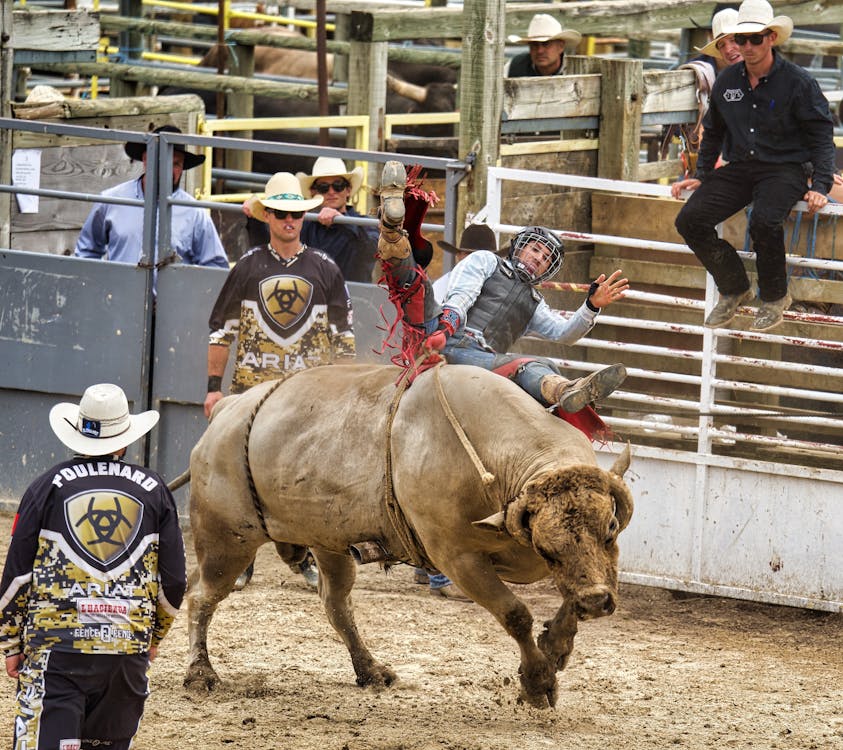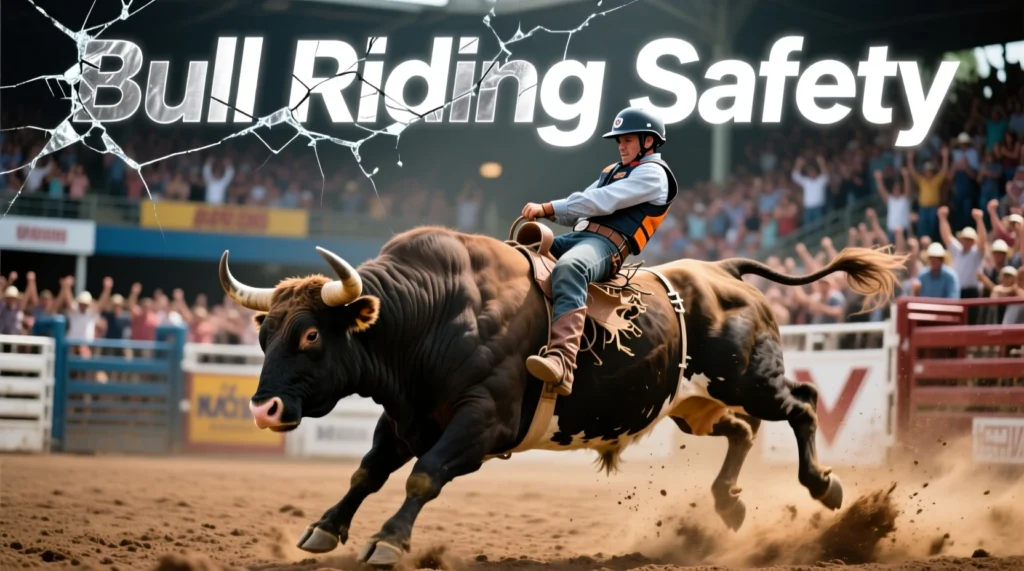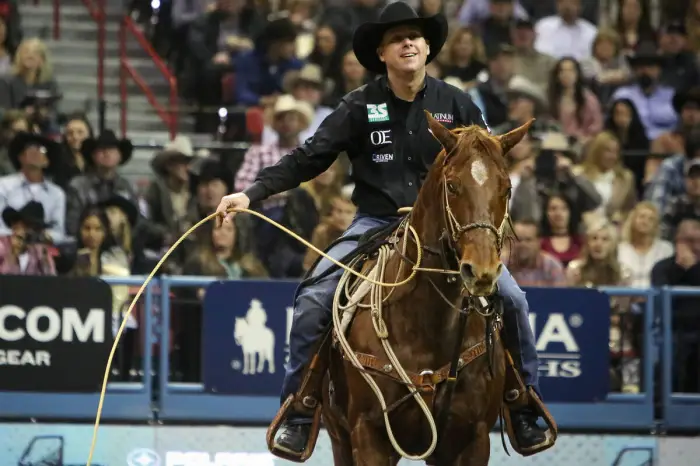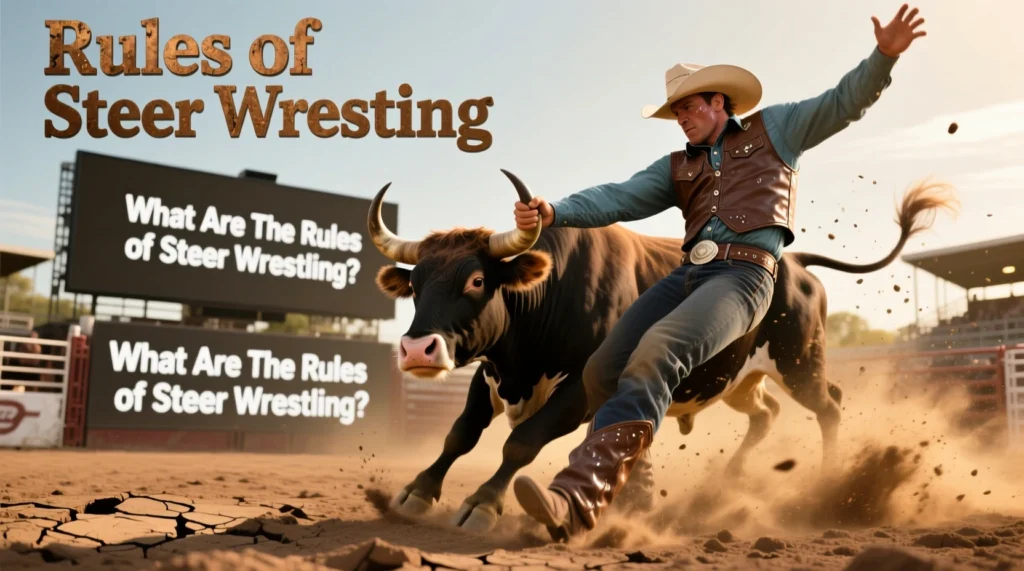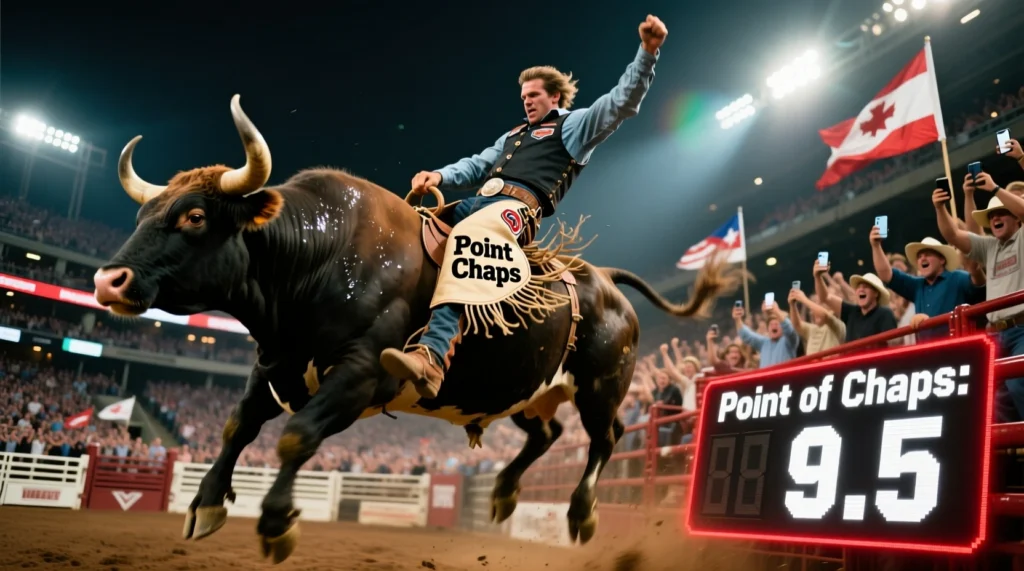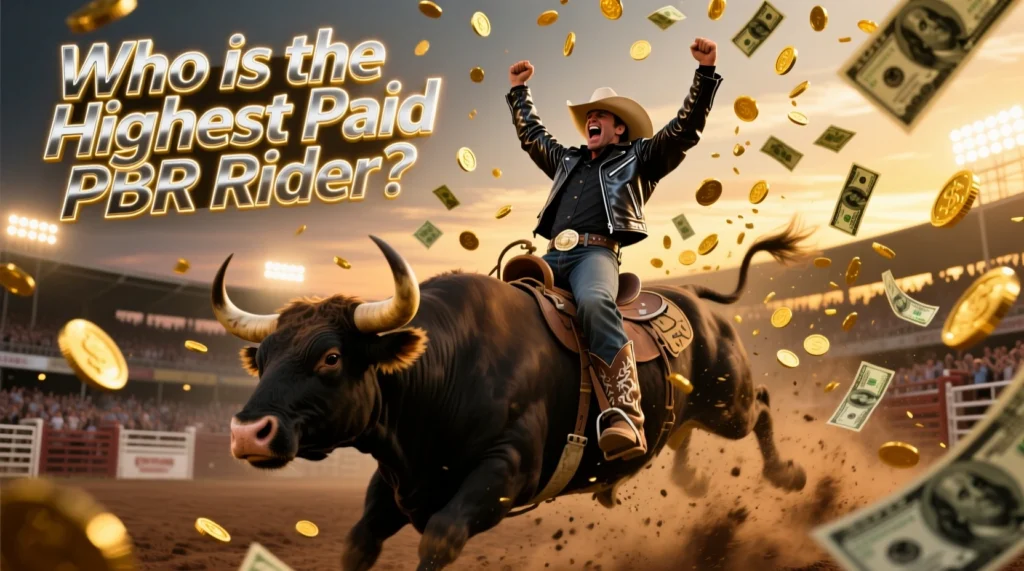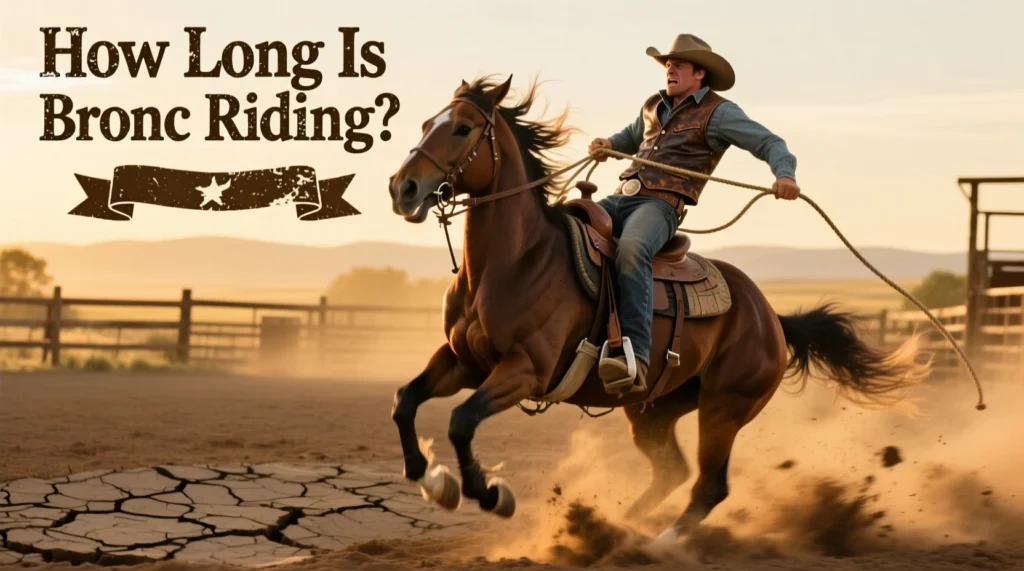Why Do Bulls Go Crazy in Bull Riding? Bull riding is one of rodeo’s most electrifying and controversial Omak Stampede events. Spectators marvel at the raw power of bulls as they buck, spin, and leap in an attempt to throw riders off their backs. But why do bulls behave so aggressively during these events? The answer lies in a mix of instinct, biology, and human intervention.
Table of Contents
Why Bulls Go Crazy in Bull Riding
- The Flank Strap
A key tool in bull riding is the flank strap, a soft rope tied loosely around the bull’s hindquarters. Contrary to myths, it doesn’t injure the bull or squeeze sensitive areas. Instead, it creates mild irritation, encouraging the bull to buck more vigorously. Bulls naturally dislike the sensation, triggering their instinct to kick and twist to dislodge the strap — and the rider. - Natural Instincts
Bulls are prey animals by nature. When they feel pressure or discomfort (like a rider on their back), their survival instincts kick in. Bucking is a defense mechanism to remove perceived threats. In the wild, this behavior helps them evade predators; in the arena, it becomes a spectacle of raw power. - Adrenaline and Environment
The chaos of a rodeo—loud crowds, bright lights, and confined spaces — can stress bulls. Combined with the physical challenge of carrying a rider, this environment heightens their adrenaline, amplifying their reactions. - Selective Breeding
Rodeo bulls are bred for agility, strength, and a propensity to buck. Bulls with a natural inclination to react aggressively are chosen for breeding, creating generations of “athlete” bulls hardwired to perform.
Key Statistics Bull Behavior and Performance in Bull Riding
Below is a synthesized table of key statistics related to why bulls exhibit aggressive or high-energy behavior during bull riding events, supported by data from rodeo records, injury studies, and veterinary research:
| Category | Statistic | Data Source |
| Bucking Performance | Bulls with ≥21-point career average bucking score (judged on height, spin, kick, etc.) | 6,855 bulls |
| Elite Bucking Bulls | Bulls with ≥22-point career average bucking score | 312 bulls |
| Career Longevity | Bulls with ≥100 recorded outs (rides) | 96 bulls |
| Injury Rates (Riders) | Severe injuries (fractures, concussions) caused by bull behavior | 36% of all injuries |
| Head/Neck Injuries | Concussions + head/neck injuries attributed to bull actions | 28.9% of injuries |
| Breed Prevalence | Brahman crossbred bulls (bred for agility/bucking) in rodeo | 29.5% of cases |
| Musculoskeletal Issues | Bucking bulls with musculoskeletal disorders (vs. non-bucking bulls) | 31% vs. 18% |
| Medical Disorders | Bucking bulls diagnosed with medical conditions (e.g., abscesses, lameness) | 19% of cases |
| Event Exposure | Bulls appearing in ≥5 PBR Premier Events | 13,284 bulls |
| Buck-Off Correlation | Riders with 100+ buck-offs earn more (linked to bull difficulty) | Trend observed |
Pros of Bull Riding
- Cultural Heritage
Bull riding is deeply rooted in ranching and cowboy culture, celebrated as a test of human courage and skill. - Bovine Athleticism
The sport highlights the incredible strength and agility of bulls, showcasing their role as elite animal athletes. - Economic Impact
Rodeos generate significant revenue for local economies, supporting jobs in agriculture, entertainment, and tourism. - Human Skill
Riders train for years to master balance, timing, and mental resilience, earning respect for their dedication.
Cons of Bull Riding
- Animal Welfare Concerns
Critics argue that flank straps and the rodeo environment cause undue stress, even if bulls aren’t physically harmed. - Risk of Injury
Bulls can sustain injuries like torn muscles or ligaments during performances. Riders also face life-threatening risks, including concussions and broken bones. - Ethical Debate
The use of animals for entertainment sparks ethical questions about exploitation and consent. - Misrepresentation
Some argue that bull riding perpetuates the myth that bulls are inherently aggressive, ignoring their typically calm demeanor outside the arena.
Insights of Bull Riding
- Instinctive Defense Mechanisms: Bulls attack bucks primarily as an instinctive attempt to remove a perceived threat, i.e. the rider and the tightly buckled leash. The reins are placed around the bull’s sensitive belly (not the genitals), causing pain that triggers a strong physical response. This is not “madness” but a natural attempt to relieve itself of irritation and regain control of its body.
- Fear and Stress Response: The rodeo environment is extremely stressful for bulls. Loud crowds, confinement, and unfamiliar surroundings exacerbate their natural fear response. Signs such as flaring nostrils, snarling, and charging at people in the ring are signs of distress, not inherent aggression.
- Selective Breeding: The bull riding industry specifically breeds and selects bulls that display strong bucking behavior. Not all bulls react the same way. Those who respond most strongly are favored and bred for future events. This means that the animals used are genetically predisposed to respond more strongly to the stimuli of bull riding.
Case Studies
- Behavioral Analysis in Rodeo Bulls (Texas A&M University): A study analyzing more than 500 bulls found that only 36 percent exhibited aggressive behavior (eg, charging after the rider dismounted), while the majority did not. This suggests that while some bulls overreact, “going crazy” is not universal.
- Temperament and Environment (University of Tennessee): Research suggests that bulls’ motivation is influenced by their environment and handling. Bulls can get used to repeated handling, but when exposed to new environments or handlers, their fear and reactivity increase. This supports the idea that rodeo settings, which are novel and chaotic, elicit strong responses.
- Animal Welfare Observations: Animal welfare organizations note that a combination of physical discomfort (from back leash), rider presence, and a stressful environment are key triggers for bucking and aggressive behaviors seen in bull riding events.
Expert Opinions
- Animal Behaviorists: Experts agree that bucking is a direct response to pain and fear, not a sign of inherent anger or madness. The behavior is a survival mechanism – an attempt to ward off a threat or escape a stressful situation.
- Rodeo Industry Professionals: Within the industry, bulls are valued for their booking performance, which is tracked and scored. The most successful bucking bulls are often bred to produce offspring with similar traits, reinforcing the genetic component of this behavior.
- Veterinarians and Welfare Advocates: Many veterinarians and animal welfare advocates emphasize that the physical and psychological stress on bulls during events can cause severe distress, as evidenced by their body language and physical signs.
Bull riding’s intensity stems from a blend of instinct, training, and human influence. While the sport honors tradition and showcases remarkable athleticism, it also raises valid ethical and safety concerns. Understanding why bulls behave as they do – driven by biology and environment – offers a clearer lens to debate its future. Whether seen as art, sport, or exploitation, bull riding undeniably commands attention, demanding respect for both the riders and the powerful animals they aim to conquer.

